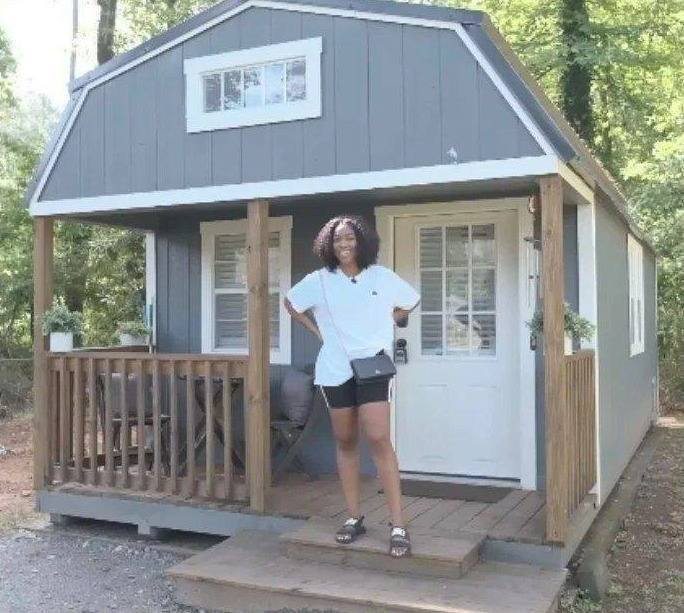In 2020, I decided to build a microhome in the backyard of my 1,400-square-foot house in Atlanta, Georgia, and the entire project cost me just over $4,000. What initially started as a simple way to reduce living expenses and make better use of my property ended up becoming one of the smartest financial decisions I’ve ever made. By constructing a 296-square-foot tiny house, I was able to rent out my main home, and the income I now receive covers the mortgage, property taxes, and utility bills.

That means I’m essentially living in my own space without paying a dime in ongoing housing costs. While the idea of living in a structure that’s smaller than most studio apartments may seem extreme to some people, I’ve found it incredibly comfortable thanks to a thoughtful design that maximizes both space and function. From the outside, it might resemble a simple shed, but step inside, and the layout reveals a highly efficient living space that feels far from cramped. In fact, there are moments I genuinely forget I’m living in a tiny home because everything is so well-placed and functional. The tiny home lifestyle is quickly gaining traction in the U.S., and many people are drawn to the idea of downsizing and embracing minimalism.
But building one of these homes isn’t as straightforward as it might sound. If you’re thinking about constructing a tiny house in your own backyard, it’s important to take certain key steps to ensure success. The first step is to check local zoning laws. Zoning regulations determine what kind of structures can be built on a piece of land and where they can be located. While some larger cities have updated their zoning laws to accommodate the growing need for affordable housing, many still have strict rules when it comes to additional dwellings on residential lots. Start by looking up your city’s zoning map online or contacting the local zoning office directly.
It’s essential to understand if your property falls under any special zoning district with unique restrictions. If the information seems confusing, don’t hesitate to reach out to your city’s planning or construction department. They can explain exactly what’s allowed and whether you’ll need a permit or special variance to build. Once you’re clear on zoning, the next step is understanding the building and safety codes in your area. Just because your house is small doesn’t mean it’s exempt from regulations. Your tiny home must still meet local standards for things like structural safety, electrical wiring, plumbing, and insulation. If your structure is permanent rather than mobile, it must comply with the codes for fixed buildings. This includes installing proper insulation, securing a foundation, and using licensed professionals for electrical and plumbing work.
Ignoring these steps could lead to major fines or even having to dismantle your home. After zoning and code requirements, the next priority is planning your budget and design. Building a tiny home is far more affordable than traditional housing, but you still need a realistic budget that accounts for all expenses, including permits, materials, tools, and labor. My total cost was around $4,000, but every project is different depending on the level of complexity and whether you hire help or go the DIY route. Always plan for unexpected costs and possible rework. The design process is just as critical. Think about how the space will be used—whether for personal living, guests, a rental unit, or even a home office. Every inch matters in a microhome, so storage solutions and multi-use furniture are key. Prioritize comfort without sacrificing functionality, and be creative in how you divide and use the space. In the end, building a tiny home was a decision that not only saved me money but also gave me the freedom to live without the financial pressure of a monthly housing payment. It’s an investment that pays off both financially and emotionally. Living small has taught me to focus on what truly matters and avoid unnecessary clutter. If you’re considering doing the same, make sure to thoroughly research your area’s laws, follow proper building procedures, and carefully plan every step. A tiny house might be small in square footage, but the rewards are huge when you build it right.





